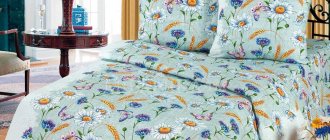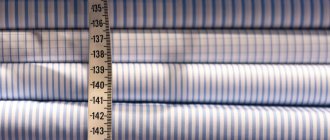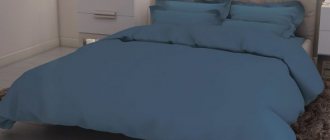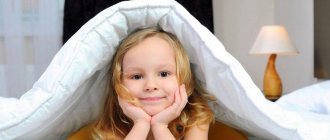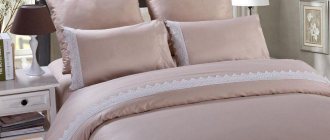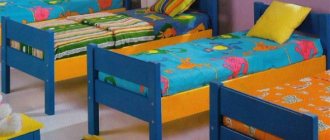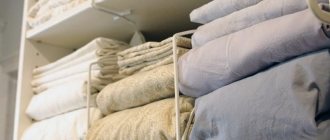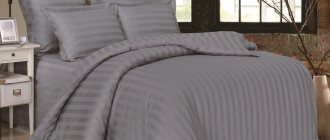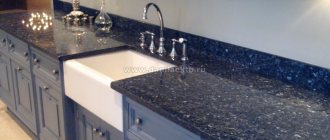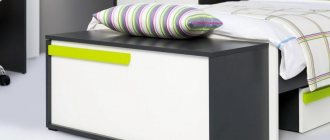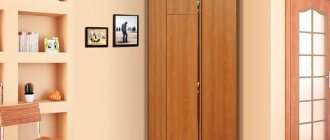Children's bedding is a special type of bedding that parents pay special attention to when purchasing. To make children's bedding sets, we use safe and high-quality materials, both synthetic and natural. A child is constantly developing, and therefore, as children grow older, they need the correct size pillowcases, duvet covers and sheets.
To choose the right set, you need to take into account the height and age of the child, and the dimensions of the bed. Parents should keep in mind that it is much easier to choose bedding for standard-shaped products.
Types of children's bedding sets and requirements for them
Children should feel comfortable in their bed.
As with any children's products, very high demands are placed on bed linen regarding hygiene, thermoregulation, and general safety. A quality product must:
- Help keep warm, but not contribute to overheating, which is dangerous, in particular for babies.
- High-quality materials should not interfere with free air exchange in order to avoid excess sweating, diaper rash and related problems.
- Good linen is hygroscopic, that is, it absorbs excess moisture, quickly evaporates it and at the same time retains heat.
- Hypoallergenicity is extremely important - at the slightest manifestation of itching, sneezing and other symptoms, it is necessary to change the bedding, if this is the case.
- Easy to care for – any baby clothes need regular cleaning and washing. If parents choose demanding, capricious materials, it is a good idea to invest money from the family budget into a local dry cleaner.
On sale you can find the following products that meet the most stringent quality standards:
- sets for newborns;
- linens for babies in a crib;
- kindergarten kits;
- blankets for schoolchildren and teenagers;
- double sets;
- non-standard sizes - made to order or sewn personally by parents as part of needlework.
Care Tips
Proper washing alone is not enough for the bumpers to serve you faithfully for a long time. You also need to know a few other useful tips that will help you use this accessory for as long as you need.
- If Velcro is attached separately to the sides, it is best to remove them and wash them separately by hand before machine washing.
- If the sides have removable covers, then it is better to wash only them for the first time, without affecting the filling.
- Never add a lot of powder to the washing water, as it will be extremely difficult to wash it later. Also, do not soap the fabric too much if it is not heavily soiled.
- It is necessary to rinse the sides in cool water so that they can easily restore their original shape. Rinse the products several times until the water becomes perfectly clear.
- Do not unscrew the sides after rinsing under any circumstances, as this may cause deformation of the product. If unscrewing is still necessary, do not use much force - unscrew the sides slightly so that water does not flow from them too much. If the product was washed in a machine, it is better to avoid spinning or set it to the very minimum.
- Ideally, immediately after rinsing, the sides should be laid out on a clean surface, wait until the water drains, and only then hang them up to dry.
- It is advisable to dry the sides in the fresh air, but not in direct sunlight. Firstly, they can spoil the color of the material, and secondly, they can worsen the characteristics of the filler.
- The ties and Velcro should be attached back to the sides only after all accessories have completely dried - then they will not stretch.
- Ironing the sides of a baby crib is not recommended to avoid damage to the filling. This is especially true for the sides, which are filled with foam rubber inside.
Then you will definitely have to say goodbye to this accessory and go buy new sides.
About blankets and duvet covers
A blanket is a cozy, versatile and practical bedding that will be useful to your baby from the first days of life. Comfortable transformable blankets for discharge and for first walks, summer and winter options - all these things are designed to improve the quality of sleep, make the child’s life and growth healthy, and every new day active and full of discoveries.
The right duvet cover can not only extend the life of the duvet, but also improve your baby's sleep, health and overall quality of life. When choosing children's products, three parameters are most important: the age and height of the child, as well as the size of the bed. Let's take a closer look at standard models of blankets and duvet covers for different ages and situations. Standard sizes are very simple and convenient - textiles in this group can be freely purchased in theme stores and even in supermarkets. It is easy to select duvet covers for standardized models of blankets - just know the sizes.
Common dimensions of blankets:
- 110 cm by 140 cm;
- 100 cm by 135 cm;
- 60 cm by 120 cm.
Sets for cribs with railings must be chosen very carefully, because too small a product will not allow you to comfortably spread the blanket, and too large will cause all the linen to crumple and interfere with sleep.
It is believed that the simplest solution in this case would be to purchase a blanket measuring 60 cm by 120 cm - such a product almost completely covers the cribs for babies and does not cause any problems.
Typically, blankets of such a small size are double-sided and last only a few years, sometimes up to a year (due to the child’s growth characteristics). It is not always possible to easily find a ready-made duvet cover, but when buying or sewing it yourself, you need to make the linen a little larger; it is permissible to exceed the duvet parameters by 2-5 cm. This option is also suitable for strollers, since a compact duvet will not take up much space and will keep you warm , will cover and protect from sudden manifestations of bad weather.
It is important! Blankets for newborn babies cannot be chosen according to the principle “the more, the better.”
Large items are only suitable for walking, but are unsafe - they can unfold (therefore, it is better to use special envelopes with a fixation system for these purposes). Such things will not fit in the crib; at best, you will have to bend the edges. For the little ones, it is recommended to purchase two blankets - one directly for the bed, and the other for moving, playing, and so on.
For discharge, it is worth preparing a model of 110 cm by 140 cm - the experience of many young parents suggests that this is the optimal and practical option. It must be taken into account that discharge can happen at different times of the year, so you need to think about what material the blanket will be made of. There are demi-season and winter models. For a blanket of this format it is easy to choose ready-made linen. The optimal size of a duvet cover is 112 cm by 146 cm. Products of this format are quite durable, because they are also suitable for use in kindergarten.
Temperature
Control over the formation of comfortable conditions for the rest and development of children falls on the shoulders of educators, who must monitor the proper cleaning and preparation of playrooms and bedrooms for the reception of children. So, in addition to observing the temperature regime, it is necessary to control the air humidity and ventilation of the premises.
According to SanPin, all rooms in which children play, study or relax must be ventilated. And the procedure is carried out according to the following standards:
- at least twice a day for a maximum of 30 minutes with the formation of a draft, but in the absence of children;
- ends half an hour before the students arrive;
- unilaterally in the presence of children and only in hot, dry weather.
According to SanPin, air humidity in kindergarten rooms in 2022 should not rise above 60% and cannot be below 40. As for temperature, the following limit values are allowed:
- gaming within 21-24, the most optimal is 24 degrees;
- the bedroom ranges from 18-22, but 22 is best.
A slight deviation from fixed standards is allowed, but only in the direction of decreasing indicators. Exceeding the maximum permissible figures is strictly prohibited.
Sizes of blankets and duvet covers for schoolchildren and teenagers
For school-age children, one-and-a-half sets of standard sizes are suitable.
Schoolchildren already want to have their own space, their own room and personal belongings. Bed linen is no exception. Children prefer bright fabrics and fun designs. The following blankets are ideal for this age:
- 110 cm by 140 cm;
- 140 cm by 140 cm.
These are universal sizes, so it will not be difficult to choose suitable bedding for them, which usually exceeds the above parameters by several centimeters.
Important! When purchasing bedding for beds, blankets and pillows, it is enough to know the sizes of these accessories in order to choose pillowcases and duvet covers solely according to the sizes that the manufacturer indicates on the packaging.
Teenagers are practically independent adults, so the underwear for them is selected to be adult. To make a young man comfortable and warm in his bed, one-and-a-half sets of standard sizes are suitable:
- 140 cm by 205 cm;
- 150 cm by 200 cm;
- 160 cm by 210 cm.
For such products, ready-made bed linen of a pleasant design made from various textile materials is also available for sale. Typically, the sizes of duvet covers for them vary from 150 cm by 200 cm to 160 cm by 210 cm.
Standards in baby kits
A ready-made bedding set (FBS) for babies includes the following accessories:
- Blanket – 110x140 cm. In hot weather, a thin blanket and a flannel blanket are enough for newborns, in winter – two thin ones and a down one. All of them are small and compact in size.
- Duvet cover – 112x146 cm.
- The side for protection is 360 cm x 36 cm. In winter, it is advisable to use a soft one, since in summer it disrupts air circulation.
- Pillow (thin as standard).
- Pillowcase – 60x40 cm.
- Canopy with fastening.
- Side pockets and mattress cover.
- Bed sheet – 127x146 cm (can be made with elastic).
About pillows and pillowcases
A child over three years old needs a pillow.
A pillow is an important bedding item designed to support the child's head, cervical spine and spine in the correct position during sleep. The beauty of posture largely depends on her correct choice. The pillowcase should be practical, environmentally friendly and not have any of its own chemical industrial smell, because such an effect can interfere with healthy rest.
There are many different shapes and types of pillows that are used in children's rooms:
- orthopedic;
- traditional.
Pillows vary in shape:
- square;
- rectangle;
- circle or oval;
- rollers, arcs and snakes;
- orthopedic “butterfly”.
Ovals, arcs and snakes are most often used as decorative pillows; people do not sleep on them. Newborns and infants do not need pillows. The first accessories of this kind can be used from the age of three, earlier - only after consulting a doctor, if such a need arises.
Specialized models include:
- inclined pillow for easier breathing;
- lateral support pillow that prevents hyperactivity during grooming and uncomfortable postures during sleep;
- anti-suffocation pillow made of highly breathable material.
Thin nursery bed pillows are considered one of the basic bedding items for babies. There are such pillowcases for them:
- pillowcase standard – 60 cm by 40 cm;
- European standard – 35 cm by 45 cm.
For older children, kindergarten and school age, there are also several standard options:
- square - 70 cm by 70 cm;
- rectangle - 50 cm by 70 cm and 40 cm by 60 cm.
High-quality sleep helps maintain the child’s psychological health; during rest, the baby assimilates all new information and impressions received, and better concentrates his attention on new tasks. During sleep, the child grows and strengthens the immune system.
Fillers and insulation for pillows and blankets
A down blanket is warm and light, but it is not recommended for allergy sufferers.
The filling for a baby blanket should be light and comfortable. It is best if the blanket can simply be washed in a regular washing machine without spoiling the performance of the product. That’s why, when purchasing bedding sets for children, it is better to focus on the following options:
- Wool is a traditional natural filler that has been used by mankind as insulation since ancient times. This is a humane material because animals are shorn or combed to obtain raw materials. Wool is light, elastic, warms well, prevents overheating, and quickly absorbs moisture. However, the material requires special care - it is best to dry clean the products. The most suitable varieties of wool for blankets come from sheep and camels.
- Down is a soft and delicate material. This is a warm, delicate, hygienic filler. It requires careful handling, costs a lot and needs proper care. When using a blanket made of natural down, you must ensure that the product does not cause allergies.
- Silicone - this synthetic filler is pleasantly elastic and light. You should use silicone blankets with caution - the filler accumulates static electricity and, as a result, attracts dust.
- Synthetic winterizer is a cheap, affordable, proven material that has been tested for years, but is not particularly durable. You can buy padding polyester blankets for the youngest children, because kids grow quickly and the item may not have time to wear out.
- Holofiber is considered one of the best synthetic fillers for blankets and pillows. Holofiber consists of a mass of spiral-shaped polyester fibers. When pressed, the material gives way and immediately straightens when the pressure disappears. The material does not crumple, it is reliable and safe.
The pillow should be moderately soft and elastic, the absence of foreign odors, as well as ease of care, is important. The best fillings for children's pillows are:
- Bamboo is an eco-friendly plant material that is good for health. Bamboo fibers allow air to pass through well, they are elastic, and the products made from them are durable.
- Camel wool is a soft, lightweight natural material, considered lighter than sheep wool and has a positive effect on health.
- Sheep wool is more affordable financially than camel wool. The material is easy to care for and environmentally friendly.
- Comforel is a synthetic filler made of polyester fibers coated with silicone. Form-stable filler, safe, does not cause allergies.
The materials mentioned above are also used as filler for pillows: holofiber, natural down, padding polyester. Some parents use aromatic sachets with bergamot, lavender, rose, chamomile and hops as additional material for a healthy and restful sleep for the baby.
Sheet sizes
The sheet deteriorates faster than other bedding elements, wears out and requires frequent care. It protects the mattress from wear and tear, and also prevents the delicate baby skin from coming into contact with the dense and often delicate fabrics of the cover.
The easiest way is to purchase products designed for standard furniture and mattresses. It is worth mentioning the following common sizes and models:
- standard – 120 cm by 150 cm;
- crib – 110 cm by 150 cm;
- for newborns – 127 cm by 146 cm;
- for teenagers – 150 cm by 220 cm.
Typically, sheets are simply placed on the mattress, tucked under it, and also come with an elastic band that will simply tightly grip the mattress on all sides and will not allow the product to fidget around the bed.
